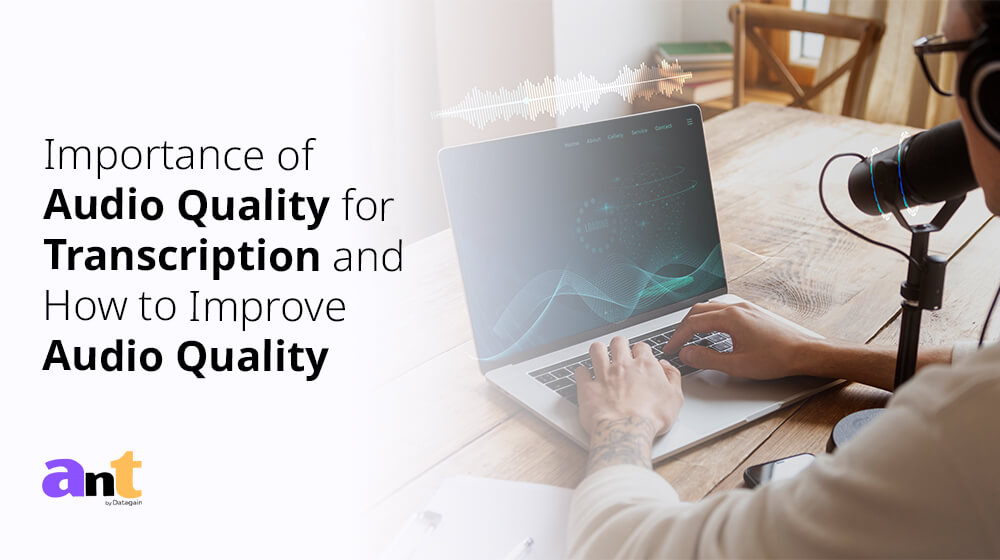Qualitative research focuses on understanding human experiences and social phenomena. One of the main methods used in qualitative research is conducting interviews. To make the most out of these interviews, researchers often transcribe them. This blog explains why interview transcription matters in qualitative research.
Understanding Interview Transcription
Before diving into why interview transcription matters in qualitative research, it’s important to understand what interview transcription is. It involves converting audio or video recordings of interviews into written text. This transcription process captures every word spoken, including nuances like tone and pauses, providing a detailed and accurate record of the conversation.
Benefits of Interview Transcription
- Accuracy and Detail – The first reason why interview transcription matters in qualitative research is accuracy. When researchers transcribe interviews, they create a written record of everything said during the interview. This means they can capture all details, including specific phrases, pauses, and emotions, which might be missed if they only took notes during the interview.
- Easier Analysis – Another reason why interview transcription matters in qualitative research is that it makes analysis easier. Transcribed interviews can be reviewed multiple times without having to listen to the recordings repeatedly. This allows researchers to code and categorize the data more efficiently, leading to more thorough and nuanced findings.
- Sharing and Collaboration – This is also a vital aspect when it comes to interview transcription matters in qualitative research. Written transcripts can be easily shared with other researchers. This helps in verifying the findings, getting feedback, and ensuring that the analysis is robust and reliable.
- Transparency and Validity – Interview transcription is also crucial for transparency and validity in qualitative research. When researchers transcribe interviews, they provide a clear and accessible record of the data collection process. This transparency helps in validating the research findings, as others can review the transcripts and understand how conclusions were drawn.
- Time Management – Another reason why interview transcription matters in qualitative research is time management. Researchers can save time during analysis by having a written transcript to work from. They can quickly locate specific parts of the interview, rather than searching through hours of audio recordings.
- Facilitating Longitudinal Studies – In longitudinal qualitative research, where interviews are conducted over an extended period, transcription is invaluable. It allows researchers to track changes and developments in participants’ responses over time. This is another reason why interview transcription matters in qualitative research, as it supports comprehensive, long-term analysis.
Challenges in Interview Transcription
While understanding why interview transcription matters in qualitative research, it’s also essential to recognize the challenges involved. Transcription can be time-consuming and requires attention to detail to ensure accuracy. Background noise, accents, and technical issues can also complicate the transcription process.
Best Practices for Interview Transcription
To maximize the benefits of transcription, researchers should follow best practices. This includes using high-quality recording equipment, employing experienced transcribers, and utilizing transcription software to enhance accuracy and efficiency. These practices ensure that the transcription process is smooth and the final transcripts are reliable.
The Role of Technology
Technology plays a significant role when it comes to interview transcription matters in qualitative research. Advanced transcription software and tools can speed up the process and improve accuracy. These technologies can automatically transcribe interviews and highlight key themes, making it easier for researchers to analyze data.
Ethical Considerations
There are several ethical considerations which need to be taken care of when doing interview transcription. Transcribing interviews ensures that participants’ voices are accurately represented. This respect for the participants’ contributions is crucial in maintaining ethical standards in research. Additionally, maintaining confidentiality and securing data are paramount during the transcription process.
Future of Interview Transcription in Qualitative Research
As technology continues to evolve, the future of interview transcription in qualitative research looks promising. Automated transcription tools are becoming more sophisticated, reducing the time and effort required for transcription. These advancements further increase the impact of interview transcription matters in qualitative research by making the process more efficient and accessible.
Enhancing Research Credibility
Interview transcription enhances the credibility of qualitative research. When researchers can provide detailed transcripts, it strengthens the reliability of their findings. Peers and reviewers can scrutinize the transcripts to ensure that the conclusions drawn are based on actual data, reinforcing the study’s credibility.
Conclusion
In conclusion, there are many reasons why interview transcription matters in qualitative research. From ensuring accuracy and detail to facilitating easier analysis and collaboration, transcription plays a critical role in the research process. It enhances transparency, preserves data, and upholds ethical standards, making it an indispensable part of qualitative research. Understanding and addressing the challenges, following best practices, and leveraging technology can further enhance the value of transcription in qualitative research.

















